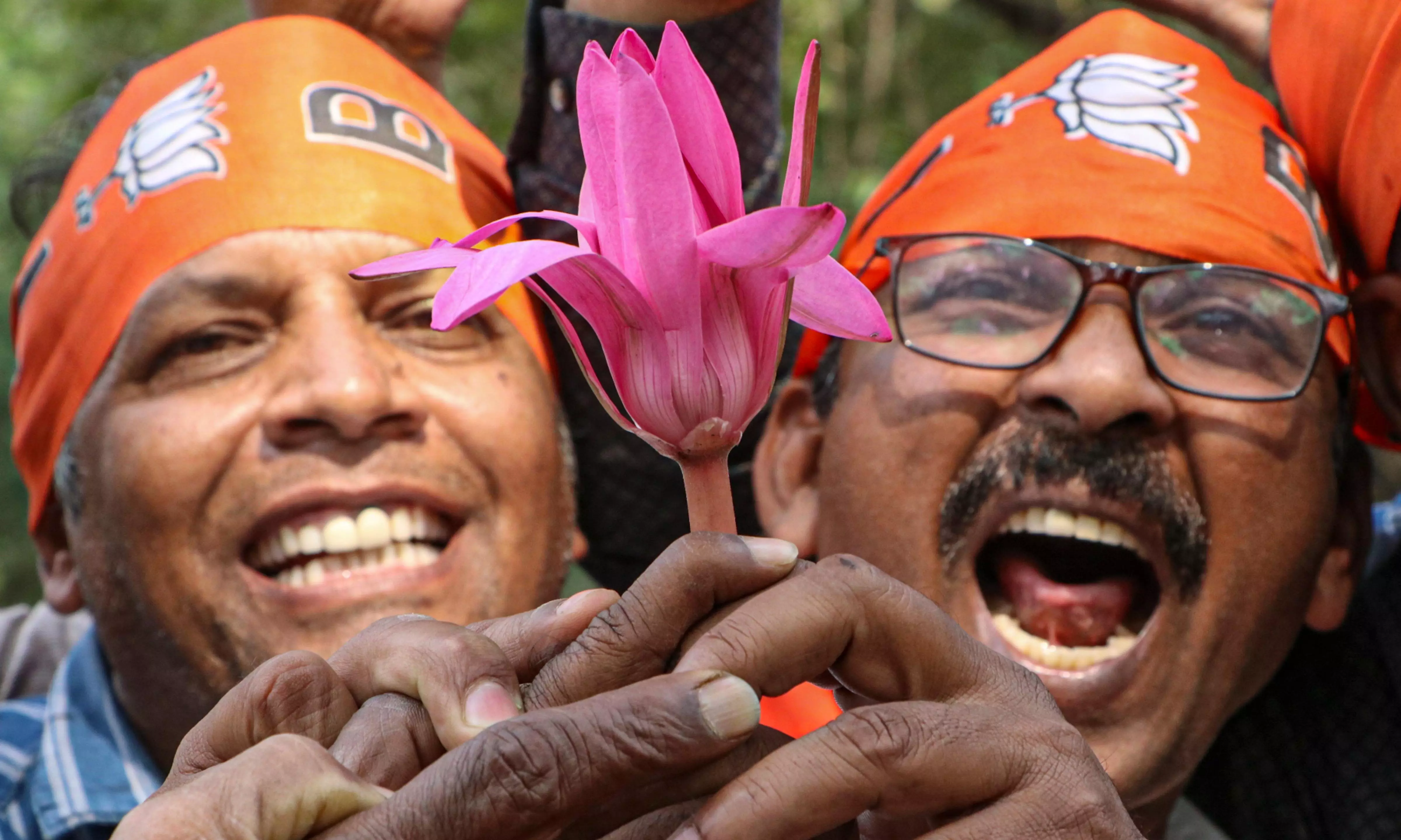
- Home
- India
- World
- Premium
- THE FEDERAL SPECIAL
- Analysis
- States
- Perspective
- Videos
- Sports
- Education
- Entertainment
- Elections
- Features
- Health
- Business
- Series
- In memoriam: Sheikh Mujibur Rahman
- Bishnoi's Men
- NEET TANGLE
- Economy Series
- Earth Day
- Kashmir’s Frozen Turbulence
- India@75
- The legend of Ramjanmabhoomi
- Liberalisation@30
- How to tame a dragon
- Celebrating biodiversity
- Farm Matters
- 50 days of solitude
- Bringing Migrants Home
- Budget 2020
- Jharkhand Votes
- The Federal Investigates
- The Federal Impact
- Vanishing Sand
- Gandhi @ 150
- Andhra Today
- Field report
- Operation Gulmarg
- Pandemic @1 Mn in India
- The Federal Year-End
- The Zero Year
- Science
- Brand studio
- Newsletter
- Elections 2024
- Events
- Home
- IndiaIndia
- World
- Analysis
- StatesStates
- PerspectivePerspective
- VideosVideos
- Sports
- Education
- Entertainment
- ElectionsElections
- Features
- Health
- BusinessBusiness
- Premium
- Loading...
Premium - Events

With his tweet, Fadnavis effectively communicates what led to difference in results barely five months later: This time, the Sangh Parivar was a united house
Shortly past noon on Saturday (November 23), Deputy Chief Minister of Maharashtra, Devendra Fadnavis, now likely being considered for one of the several positions that have opened up in the Centre as well as the state, posted on X (formerly Twitter): “Ek hain to ‘safe’ hain! Modi hai to mumkin hai! (We are safe if united! Anything is possible with Modi at the helm).
This was a premier electoral slogan in Maharashtra and had multiple variants, including Uttar Pradesh Chief Minister Yogi Adityanath’s undeniably offensive and majoritarian version — “batenge to katenge” (will be slaughtered if we are disunited).
Ecstasy after agony
The slogan had a different message, coming as it was from Fadnavis after a famous victory. It underscored the major difference between the agony on June 4 when the Lok Sabha results were declared and the ecstasy on November 23.
Back then, the BJP and its allies won just 17 of the 48 seats in the state, while the Congress, with its partners, bagged 31. In sharp contrast, while votes were still being counted when this was being written, it was evident that only a tectonic reversal of trends could deny the Mahayuti a sweeping two-third majority.
Also read: Maharashtra | Mayahuti's huge win marks longest non-Congress in office
A latent message
Coming back to Fadnavis, with his post, he communicated what led to the difference in results barely five months later: This time, the Sangh Parivar was a united house unlike during the Lok Sabha polls when the Rashtriya Swayamsevak Sangh (RSS) let its capacity to mobilize votes for the BJP be known to all and sundry, most importantly to the party troika of Narendra Modi, Amit Shah, and JP Nadda.
There is no necessity to state the obvious, but it is a known fact that the RSS cadre stepped out this time and campaigned incessantly for BJP candidates, who were also not chosen unilaterally by a handful ensconced in New Delhi, while it had been largely indifferent during the parliamentary elections.
Tempered with Jharkhand
The near two-third tally of the BJP and allies in Maharashtra, however, gets tempered with an equally emphatic sweep of Jharkhand by the INDIA bloc. The defeat of the BJP and its NDA allies in Jharkhand is all the more noteworthy because even with the RSS staying away from campaigning during the Lok Sabha polls, the BJP won eight seats while its junior partner, the All Jharkhand Students Union, was successful in one constituency.
The statistical explanation of the INDIA block’s rout in Maharashtra is almost a mirror image of the NDA’s defeat in Jharkhand. Compared to the parliamentary polls, the vote shares of the Congress and the Uddhav Thackeray faction of Shiv Sena in the assembly elections have declined by almost 5.5 and 6.5 per cent respectively.
Peculiarly, the Sharad Pawar faction of the NCP has improved it vote share although the tally of seats is way below that of Ajit Pawar’s faction. But that is another story and merits exclusive scrutiny.
Also read: BJP's dominance in Maharashtra: Decoding the party's historic victory
Congress’s underwhelming show
Significantly, in Jharkhand, the BJP’s vote share has declined by 12 per cent while the Jharkhand Mukti Morcha has gained almost nine per cent votes between the two polls this year. The Congress failed to enhance its votes, an indicator of its failure to conduct a robust campaign.
Coming close on the heels of a self-induced defeat in Haryana, this speaks poorly of the Congress leadership. Party leaders have to stop viewing Rahul Gandhi’s Yatras and campaigns as an end in itself. Nothing but a well-oiled electoral machinery secures success in polls.
Quite clearly, the BJP showing in Jharkhand is the result of significant erosion in its tribal vote. It is evident that this section has not approved the accusation against JMM leader Hemant Soren and also the BJP’s strategy to engineer the defection of the stop-gap chief minister Champai Soren.
Barrels of cash and polarised voters
In Maharashtra, the RSS-factor was not the only reason for the stunning BJP+ victory. Quite clearly, its barrels of cash, made available through both the official route via Chief Minister Eknath Shinde’s Ladli Bahin Scheme, and resources available for campaigning, along with getting its caste-combination correctly, played an importantly role.
But more importantly, the BJP leaders, from Prime Minister Narendra Modi downward, resorting to tactics which played up the latent polarization among the voters, played an important role too. As detailed results become available, more in-depth scrutiny will enable extensive and definitive analysis of factors leading to the sweep by BJP+ parties.
The Congress cannot escape blame for the diminished performance of the INDIA bloc parties. Unambiguously, coming close on the heels of the Haryana results, this verdict almost neutralizes the exuberance within the party after the Lok Sabha elections when the party not just upped its own tally, but also succeeded in partnership with allies, to reduce the BJP tally to significantly below the majority mark of 272 in Lok Sabha.
Also read: Ajit Pawar has the last laugh in Pawar vs Pawar showdown in Baramati
BJP faces a difficult choice
Over the next few days, the BJP will have to make a difficult choice: Should it continue with Shinde as the chief minister or does it bow to the understandable pressure from its ranks to have a BJP leader as the chief executive of the state?
If it chooses the second option, the party will have to decide whether or not to continue propping up a leader from a non-Maratha caste.
It merits reiterating that Fadnavis is a Brahmin and his selection in 2014 was a sign that the BJP was pushing leaders from non-dominant communities into leadership positions. This became a trend with a non-Jat being chosen as the chief minister in Haryana and a non-tribal in Jharkhand, both decisions taken alongside.
The BJP also has to take a crucial decision regarding its next party president. After the setback in the Lok Sabha polls, to a considerable extent due to the indifference of the RSS, the ties had worsened initially, with Sarsanghchalak Mohan Bhagwat making several offensive statements, that although veiled, indicated that Modi was the target.
The unstated message from Nagpur
The top BJP troika would risk their relative comfort now, compared to the period immediately following the Lok Sabha polls, to ignore the latent message in the post by Fadnavis.
The crucial meeting of the RSS last month indicated that the daggers of its brass had been withdrawn for the moment. Within his ruling coalition, too, Modi’s position has been consolidated by the result in Maharashtra, especially after Haryana.
But, the unstated message from Nagpur after the Mathura meeting is that Modi’s unilateralism will no longer be acceptable. Quite clearly, he will have to walk a humbler path if he wishes to retain political comfort. It would mean going against his instinctive choice. It has to be seen if he can recast himself in a more pragmatic mould.
(The Federal seeks to present views and opinions from all sides of the spectrum. The information, ideas or opinions in the articles are of the author and do not necessarily reflect the views of The Federal)


